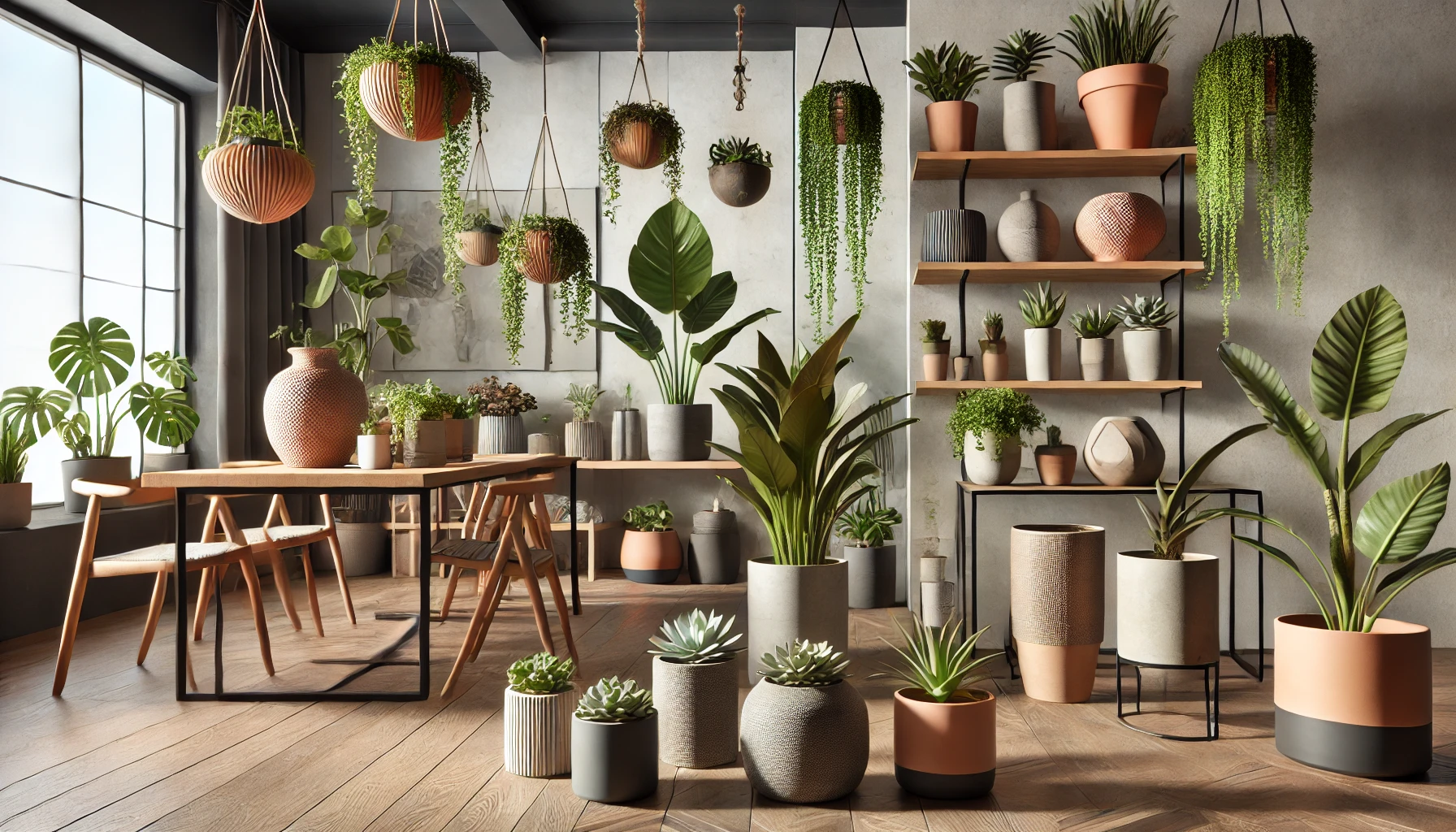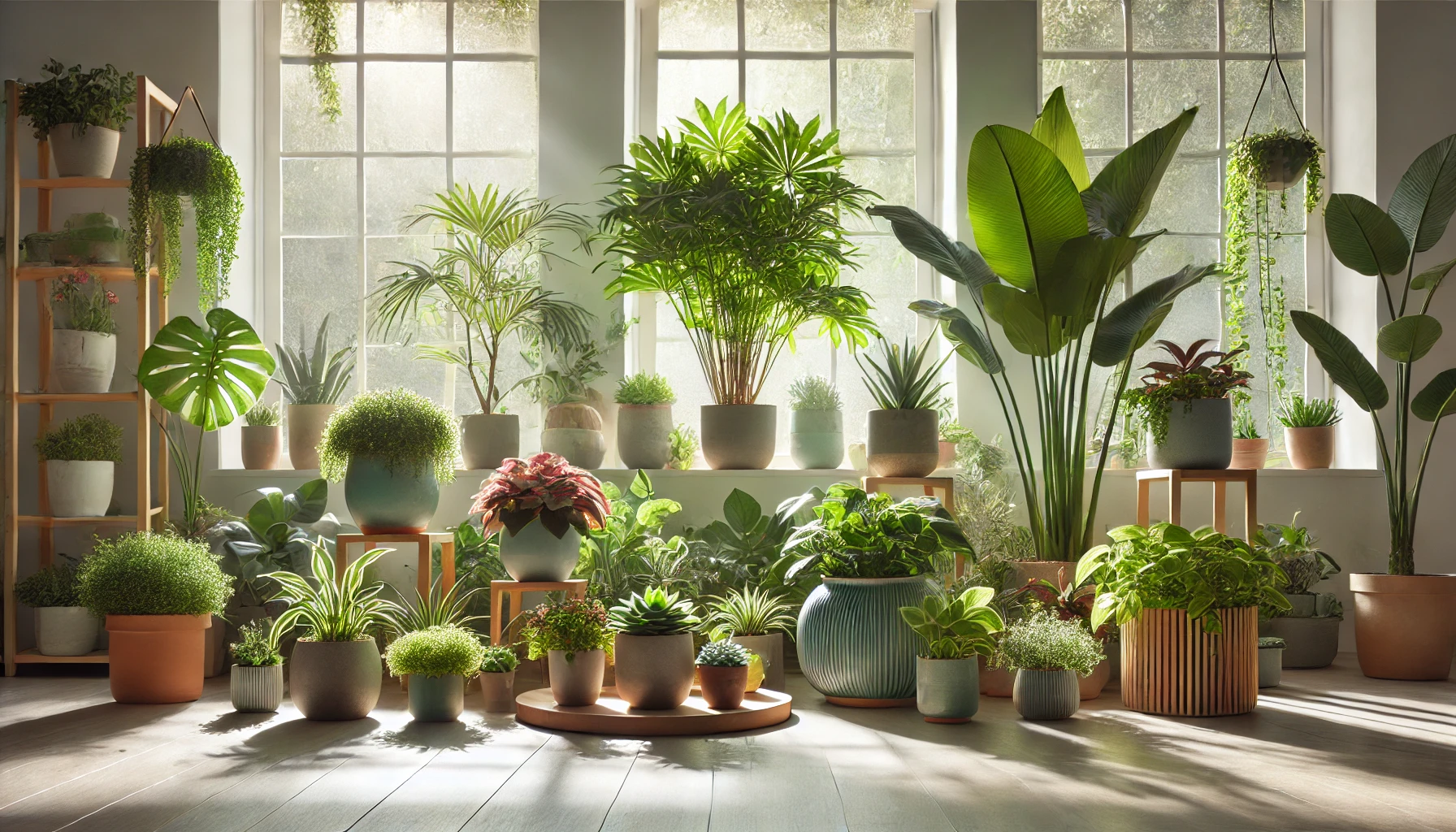The right planter can make a big difference in the health and appearance of your plants. From ensuring proper drainage to complementing your decor, selecting the perfect planter requires thoughtful consideration. This guide will help you choose the best planters to meet your plants’ needs and style preferences.
Why the Right Planter Matters
- Supports Plant Health: A good planter provides adequate drainage, space, and support for root growth.
- Enhances Aesthetics: Planters are part of your decor and can enhance the visual appeal of your plants.
- Simplifies Maintenance: Easy-to-handle planters make watering, cleaning, and repotting more convenient.
Factors to Consider When Choosing a Planter
1. Size
- Importance: The planter should be proportional to the size of the plant and allow for root growth.
- How to Choose:
- Use a planter 1–2 inches larger in diameter than the current root ball for small plants.
- For larger plants, choose a planter 2–4 inches wider.
2. Material
- Ceramic: Aesthetic and durable but can be heavy and lack drainage holes.
- Plastic: Lightweight and versatile but less breathable for roots.
- Terracotta: Porous, allowing roots to breathe, but dries out quickly.
- Metal: Sleek and modern but may overheat in sunny areas.
- Wood: Rustic and insulating but requires a liner to prevent rot.
3. Drainage
- Why It’s Important: Prevents waterlogging and root rot.
- Tips:
- Always choose planters with drainage holes.
- If the planter lacks holes, add a drainage layer of pebbles.
4. Style
- Match Decor: Choose planters that complement your home’s aesthetic, whether modern, bohemian, or minimalist.
- Color and Texture: Consider neutral tones for versatility or bold colors for a statement piece.
5. Weight and Mobility
- Heavy planters provide stability for larger plants but may be difficult to move.
- Lightweight options are better for smaller plants or plants you need to reposition often.
Planter Types and Their Uses
1. Hanging Planters
- Ideal for trailing plants like pothos and string of pearls.
- Saves floor space and adds vertical interest.
2. Self-Watering Planters
- Great for busy plant owners.
- Provides consistent hydration to prevent over- or underwatering.
3. Decorative Cachepots
- Outer pots without drainage holes.
- Use as a decorative cover for a functional inner pot.
4. Raised Planters
- Perfect for creating levels in a plant display.
- Keeps plants off the floor, improving air circulation.
5. Planter Boxes
- Suitable for grouping multiple plants in one container.
- Works well for herbs or small decorative arrangements.
Matching Planters to Specific Plants
- Succulents and Cacti: Terracotta or ceramic planters with excellent drainage.
- Tropical Plants: Plastic or glazed ceramic planters that retain moisture.
- Large Indoor Trees: Sturdy, heavy planters made of ceramic or concrete.
- Herbs: Compact planter boxes or individual pots.
DIY Planter Ideas
- Repurposed Items: Use old jars, cans, or wooden boxes for a creative touch.
- Painted Pots: Customize plain pots with patterns or colors to suit your style.
- Upcycled Planters: Transform everyday items like teacups or baskets into unique planters.
Conclusion: Plant and Planter in Perfect Harmony
Choosing the right planter is about balancing functionality and style. By considering factors like size, material, and drainage, you can find planters that keep your plants healthy while enhancing your home’s decor. With the perfect planter, your plants can truly thrive.





